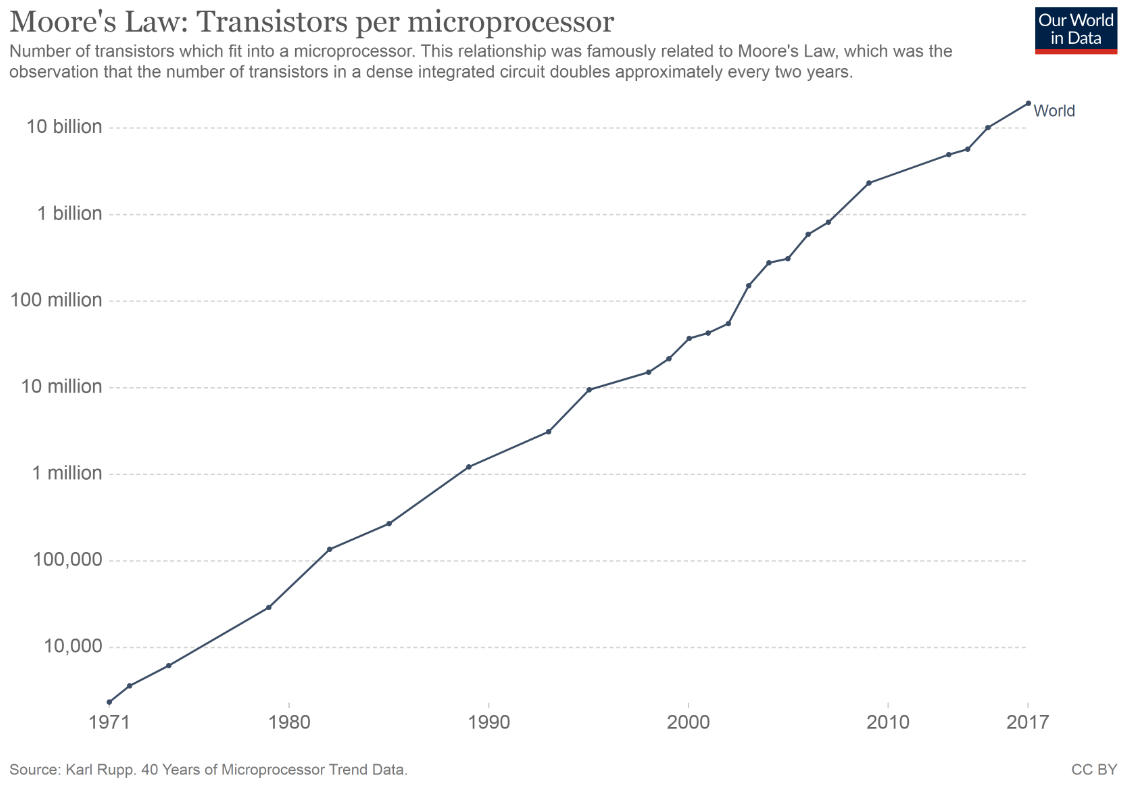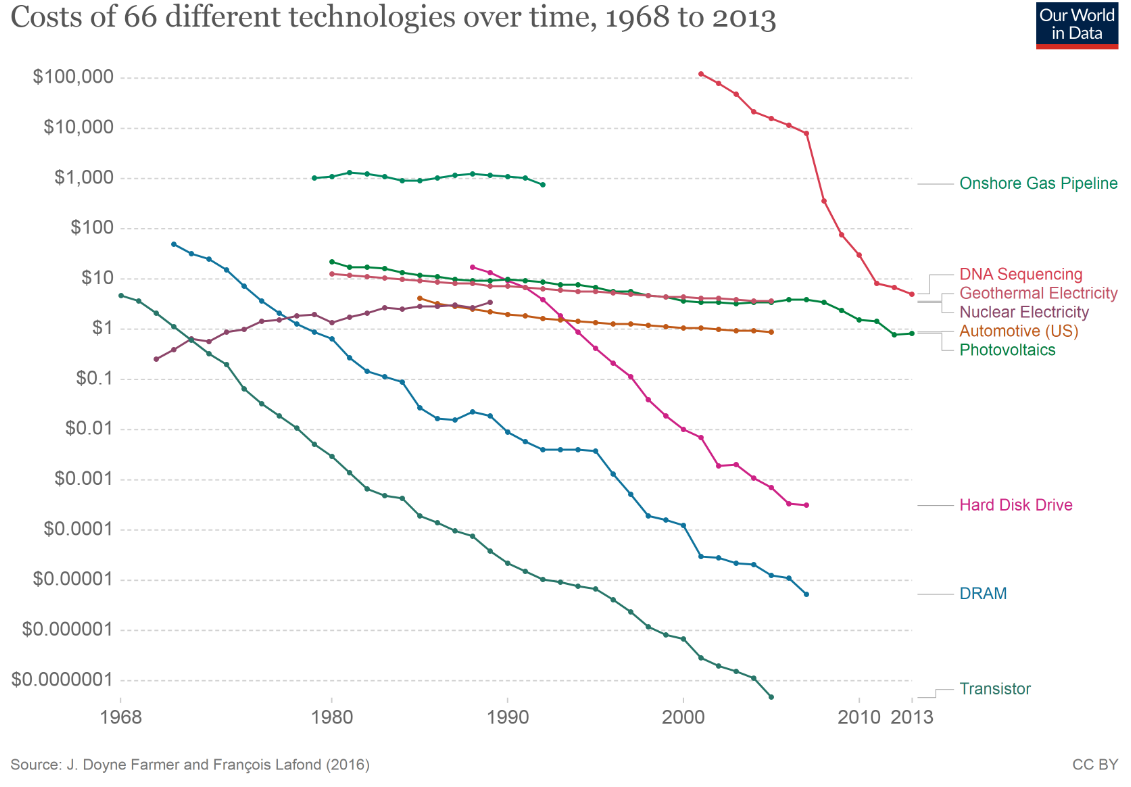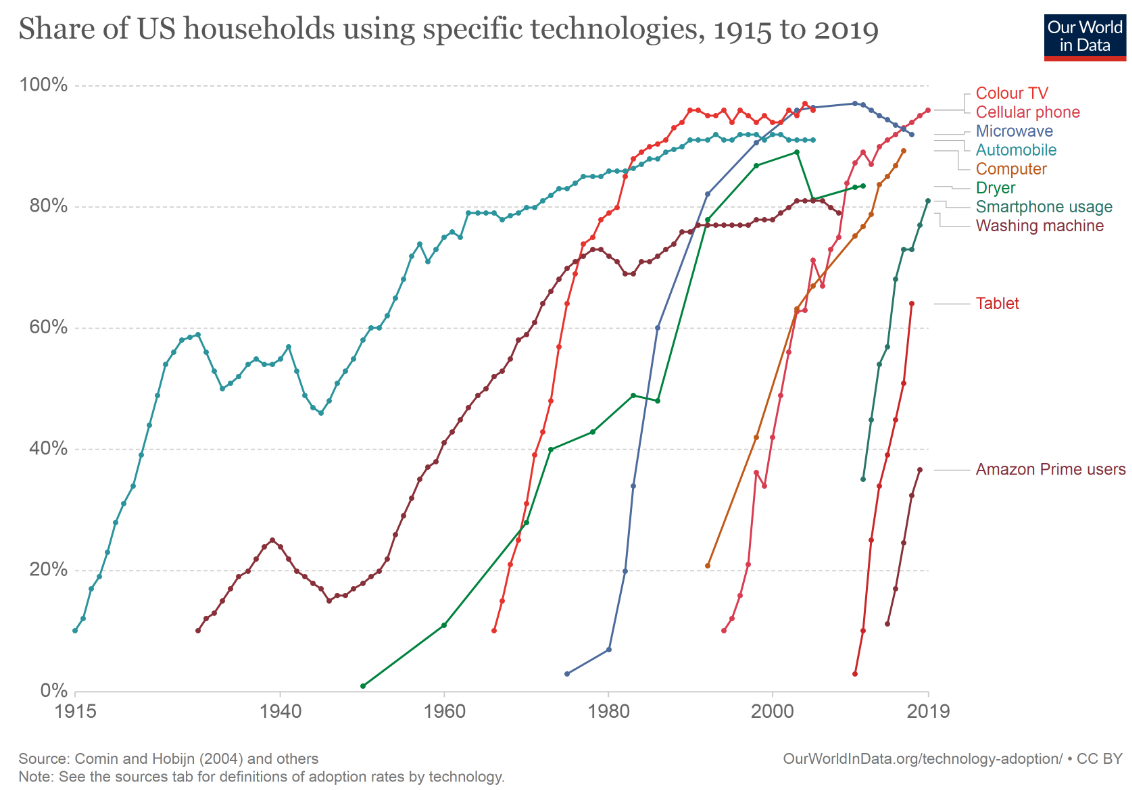“The only constant is change, and the pace of change is accelerating.” So said Peter Diamandis and Steven Kotler in their 2020 book, The Future Is Faster than You Think. We agree with them. History will show this to be a hugely significant period. Businesses, industries and our ways of life are transforming. Many different forms of innovation are converging to drive this change.
We keep our belief in accelerating innovation in mind when we look for companies. It drives us to choose those that we think will benefit most from change in how we live, work, play, make, save and spend.
Take for example the exponential improvement in computing power. In 1965, Gordon Moore (the co-founder of Fairchild Semiconductor and Intel) noticed that the number of transistors on an integrated circuit doubles about every two years.
His observation (for it was never a physical law) has had profound consequences. For instance, let’s compare our smartphones to the computer that guided Apollo 11 to the moon over five decades ago. The former now have 100,000 times the processing power and 7 million times the memory of the latter.1 This improvement in computing power is the engine of the present technological revolution. It's driving the emergence of new disciplines and approaches, such as biotechnology, genomics and quantum computing.
Although Moore’s law is well-known, it is a special case of an earlier and much broader law that was discovered by aerospace engineer Theodore Thomas Wright in 1936. Unlike Moore, who focused on time, Wright looked at units produced. Wright’s law states that each time production doubles, unit costs reduce by around 20%.
Wright’s law helps us make sense of how the future might look by forcing us to ask the question of which innovations follow its rule of thumb and which do not. As Figure 2 highlights, production costs for some key new technologies have reduced significantly over the past 50 years. Note the relatively flat lines for autos and traditional sources of energy, as compared to the sharp reductions in technological components and DNA sequencing. The outcome as the subsequent chart shows, has been that adoption rates of new technologies have accelerated over the past 120 years.
The companies of the future
You may think theoretical physics is an unlikely source of investment ideas, but we have found the thinking of Geoffrey West of the Santa Fe Institute to be highly informative in framing how we think about the companies of the future. As West recognizes in his highly lauded book Scale (2017), organisms, cities and businesses all have organic characteristics. They’re born, they grow, sometimes they shrink and, usually, they die.
Each category differ in the way it scales, however. Larger cities might benefit from the increased connections that size brings. So cities with bigger populations tend to have higher GDP per capita. Companies and organisms, on the other hand, tend to have sublinear growth characteristics. That is to say as they get bigger they get slower, less nimble and eventually die. This is undoubtedly true in most cases, but what if there are companies out there that defy this?
This is where we have learned from the work of thinkers such as Brian Arthur. In 1997, he published an incredibly prescient article, Increasing Returns and the New World of Business. In the piece, Arthur makes the point that traditional understanding of how markets and businesses operate is based on an outdated concept. This is the “assumption of diminishing returns: products or companies that get ahead in a market eventually run into limitations.”
Yet western economies have transformed in the last century. Old characteristics, such as bulk processing and materials manufacturing, still exist, but information processing, the mainstay of new economies, is there in tandem. Arthur describes, “…economic behaviors shifting from ones of diminishing returns to ones of increasing returns…the tendency for that which is ahead to get further ahead, for that which loses advantage to lose further advantage”.
This makes sense because heavy R&D-intensive industries tend to involve complex design processes. These are hard to replicate, resulting in lower unit costs as sales increase. Many of these future winners will exhibit network effects, or have high switching costs too which means they build very loyal customer relationships.
That’s why we believe we are in an era in which it pays to own those companies at two different stages of their lifecycles. We think it's important to look for companies that are using innovation to disrupt an industry, we also to seek established companies that are able to use innovation to build increasing returns.
A non-traditional view of the world
We believe deep-seated changes will continue to disrupt traditional ways of doing business, and this will give rise to a narrower set of winners across all industries. In the decades to come, the companies that harness the power of new innovations to better serve customers will be the ones that we are talking about. As long-term active investors we feel lucky to live in a time of such great opportunity.
1 Graham Kendall, "Would your mobile phone be powerful enough to get you to the moon?," July 1, 2019IMPORTANT INFORMATION
Projections are offered as opinion and are not reflective of potential performance. Projections are not guaranteed and actual events or results may differ materially.
US-120521-149302-1









